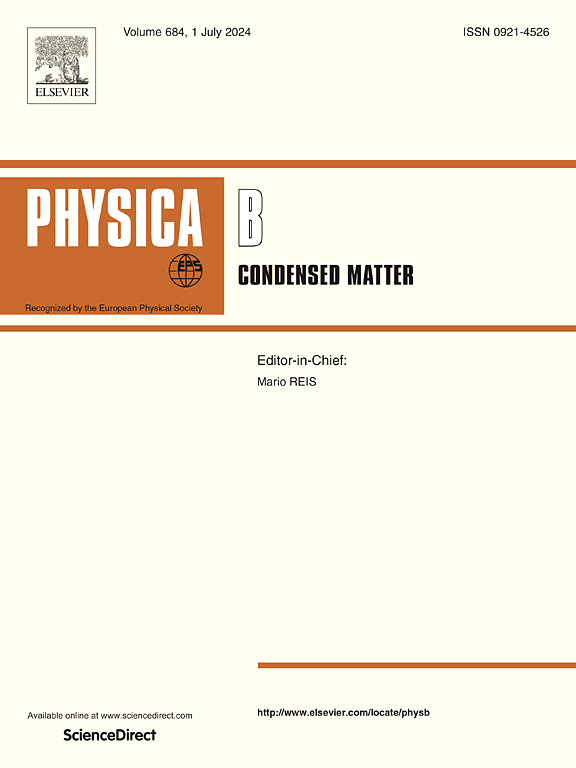Numerical simulation of Cs2AgInBr6/Cs4CuSb2Cl12 heterojunction perovskite solar cell: A path to achieve optimized performance
IF 2.8
3区 物理与天体物理
Q2 PHYSICS, CONDENSED MATTER
引用次数: 0
Abstract
In a recent study, inorganic perovskite solar cells based on Cesium continually enhanced solar cell performance. The exceptional stability and performance of the Cs2AgInBr6 layer in all-inorganic PSCs make it stand out among the other materials. Unfortunately, the Cs2AgInBr6 leads to poor solar energy utilization, significantly reducing light absorption. Based on the matching band structures of Cs4CuSb2Cl12 and Cs2AgInBr6, the present simulation suggests that Cs2AgInBr6/Cs4CuSb2Cl12 heterojunction incorporating Cs4CuSb2Cl12 rather than HTL. It is then optimized and simulated using simulation software SCAPS-1D to improve sunlight absorption as well as solar cell performance. The open circuit voltage (Voc) of the Cs4CuSb2Cl12 layer is very large compared to other materials due to its wide bandgap (1.6 eV). The large value of Voc for the proposed heterojunction perovskite solar cell gives a large value of power conversion efficiency. In the final or optimized structure of the heterojunction solar cell, the thickness of Cs2AgInBr6 and Cs4CuSb2Cl12 layers were selected as 1000 nm and 200 nm, respectively. The Cs2AgInBr6 layer had a doping concentration of 1 × 1017cm3, NT of 1 × 1010cm3, and an Eg of 1.47 eV. The Cs4CuSb2Cl12 layer has a band gap of 1.6 eV, a defect density of 1 × 1010 cm3, and an NA of 1 × 1020 cm−3. After the optimization study, the device operates at an ideal stage where Voc (V) = 1.225, Jsc (mA/cm2) = 29.037, FF (%) = 89.42, and PCE (%) = 31.83. The optimized Cs2AgInBr6/Cs4CuSb2Cl12 heterojunction has a device efficiency of 31.83 %, which is considerably greater than the power conversion efficiency of 12.91 % for a single layer of Cs2AgInBr6. Thus, this study shows that the Cs2AgInBr6/Cs4CuSb2Cl12 heterojunction PSCs can pave the way for the promising afterward of Cs-based PSCs for real-world uses in optoelectronics and photovoltaics.
求助全文
约1分钟内获得全文
求助全文
来源期刊

Physica B-condensed Matter
物理-物理:凝聚态物理
CiteScore
4.90
自引率
7.10%
发文量
703
审稿时长
44 days
期刊介绍:
Physica B: Condensed Matter comprises all condensed matter and material physics that involve theoretical, computational and experimental work.
Papers should contain further developments and a proper discussion on the physics of experimental or theoretical results in one of the following areas:
-Magnetism
-Materials physics
-Nanostructures and nanomaterials
-Optics and optical materials
-Quantum materials
-Semiconductors
-Strongly correlated systems
-Superconductivity
-Surfaces and interfaces
 求助内容:
求助内容: 应助结果提醒方式:
应助结果提醒方式:


